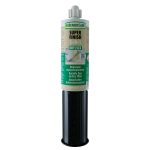Can you repair using DRY FLEX resins in high temperatures?

12
August
Although the temptation of neglecting your repairs while the sun is shining is high, sometimes it is necessary to complete them in high temperatures when the repairs can wait no longer. For these repairs you may often find yourself using DRY FLEX® resins.
A question we often get is: is that possible? Can you carry out repairs during high temperatures?
Below are a few tips and/or answers to these “burning” questions.
- Always use the products at temperatures for which they are designed ( DRY FIX® UNI: 0-35°C, DRY FLEX® 1: 0-25°C, DRY FLEX® 4: 0-35°C, DRY FLEX ® 16: 10-35°C, BIO FLEX™ COOL: 0-20°C and BIO FLEX™ ALLROUND: 0-35°C)
- Shield the primed wood from the sun. The temperature affects the open time (24 hours at 20°C) of the DRY FIX® UNI “negatively” and can therefore shorten it considerably.
- Mix the DRY FLEX® resin in the shade and spread it out as thinly as possible on the mixing plate. As a result, the temperature development (and therefore also the processing time) remains within the limits.
- Shield the filling and shaping of the repair to avoid too great an influence of the temperature on the final result.
- Always keep the completed repair out of direct sunlight while curing. Otherwise the resin will become too hot and that will compromise the durability.
If the resin gets too hot while curing, so will the epoxy compounds. This causes irreparable damage and ensures that the most important property, the elasticity of the epoxy so that it can move with the wooden surface, is partly destroyed. As a result, the objective of a sustainable repair is unfortunately no longer being achieved.











